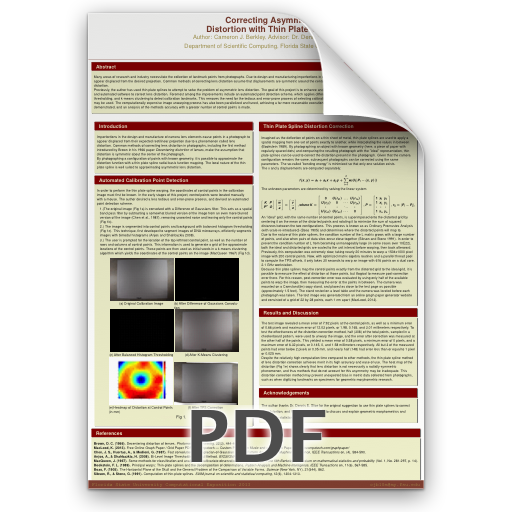
Author
Title
Correcting Asymmetric Lens Distortion with Thin Plate Splines
Abstract
Many areas of research and industry necessitate the collection of landmark points from photographs. Due to design and manufacturing imperfections in camera lens elements, coordinates of points in photographs appear displaced from the desired projection. Common methods of correcting lens distortion assume that displacements are symmetric around the center of the photograph, and may not capture the full nature of the distortion.
Previously, the author has used thin plate splines to attempt to solve the problem of asymmetric lens distortion. The goal of this project is to enhance and improve that work by developing cross-platform, user-friendly, and automated software to correct lens distortion. Foremost among the improvements include an automated point detection scheme, which applies difference of gaussians convolution, balanced histogram thresholding, and k-means clustering to detect calibration landmarks. This removes the need for the tedious and error-prone process of selecting calibration points by hand, thus increasing the practical number that may be used. The computationally expensive image unwarping process has also been parallelized and tuned, achieving a far more reasonable execution time. Here, the improvements are explained and demonstrated, and an analysis of the methods accuracy with a greater number of control points is made.

